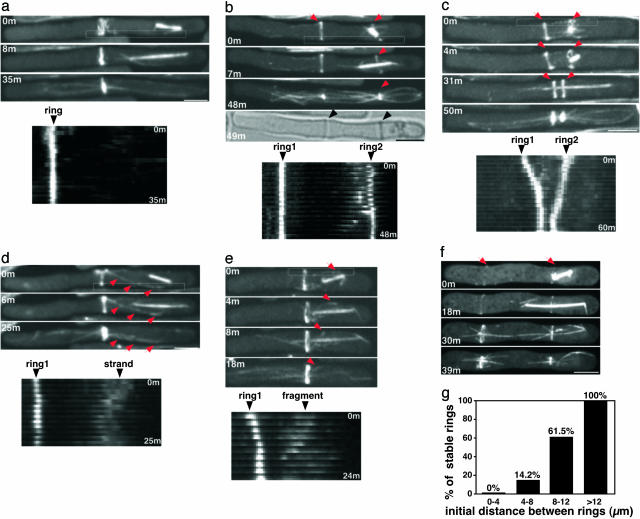Fig. 3.
Induction of extra contractile rings and ring fragments by the nucleus. cdc25-22 rlc1-GFP GFP-atb2 cells (RD129) were synchronized in mitosis by temperature shift to 36°C for 4 h, released to 25°C, and then centrifuged to displace the nucleus. Representative images of maximum Z-series projections and kymographs of the indicated boxed regions are shown. (a) Example of a cell centrifuged during anaphase that did not form a second ring or ring fragment. (b) Example of a cell centrifuged in early mitosis that assembled a second ring at the position of the displaced nucleus (arrows). Both rings were stable and functional, because they contracted and directed septum assembly (arrow heads). (c) Example of two rings that move toward each other. (d) Example of a stable strand of rlc1-GFP that extended from the region of displaced nucleus to the central ring. (e) Example of an rlc1-GFP fragment that moved from the nucleus to the ring at the old site, fusing with it (arrow at 18 min). (f) Example of cell after a double-centrifugation procedure (see Materials and Methods) that assembled two stable rings near each cell tip. (g) In cells with two rings, the percentages of cells in which rings do not move toward each other were compared with the initial distances between the rings (n ≥ 5 each point; data from both single- and double-centrifugation protocols). (Scale bars, 5 μm; kymographs, ×1.5.)

